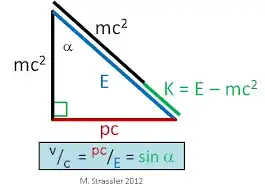I am new to Stack Exchange as well as physics.
Momentum is $$p={\rm mass} \times {\rm velocity}=mv.$$ So, if a photon has rest mass $m=0$, [Also what is "rest" mass?], and $v$ is always $c$, then $p$ is always constant.
We know kinetic energy is
$$E = \frac{1}{2}mv^{2}= \frac{(mv)^{2}}{2m}= \frac{p^{2}}{2m}.$$
$E$ is proportional to $p^{2}$, so if $p$ is constant, $E$ is also constant from photon to photon. However,
$$\lambda = \frac{h}{mc}= \frac{h}{p},$$
where $h$ is Planck's constant. Hence, we get that $p$ is inversely proportional to $\lambda$ (wavelength).
So light waves with lower wavelength or higher frequency have more momentum and hence, more kinetic energy. Overall I am confused by these contradictory conclusions.
